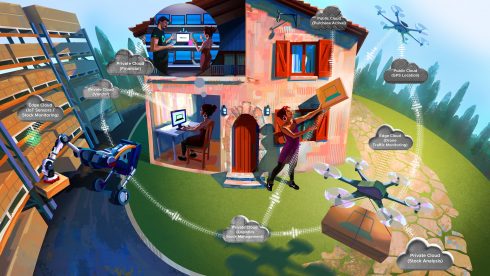DISCLAIMER: this article is older than one year and may not be up to date with recent events or newly available information.
There appears to be no end to the challenges faced by the high street. According to one report, 16 shops are closing a day in the UK, with Monsoon becoming the latest in a series of big name brands to announce store closures recently.
Since the turn of the year to 9th April, 21 retailers have failed, affecting 727 branches and 31,141 employees, according to data compiled by the Centre for Retail Research. That’s in comparison to the whole of 2018, which saw 43 retailers go bust, impacting 2,594 branches and 46,014 staff.
This isn’t a new story – the retail sector globally has been under immense pressure for a number of years, as the way we shop changes. Mobile and online commerce have become ever more popular, and in turn had a dramatic impact on consumer expectations.
What does the future hold for retailers? ‘Clicks and Mortar’, VMware’s study of UK consumer attitudes to retail, suggests that consumers are looking for a seamless experience, irrespective of whether it’s in-store or online.
To deliver the optimum experience, investment in technology is needed. But perhaps not in the way that one might expect…
An efficient, autonomous in-store experience
Quite often, when people talk about technology in a retail context, particularly in-store, the conversation can take a turn into the realms of finding a cutting-edge combination of the tangibility of physical shopping and the ease of online retail. Yet interestingly, the report shows that it’s the basics consumers want, not necessarily a virtual reality app that lets them try things on from the comfort of their own sofa.
Clear stock visibility (38%), simple returns (30%) and one-hour delivery (29%) were all rated as investment areas higher than interactive apps to try on products or clothing (17%) and entertaining in-store experiences such as augmented and virtual reality (7%).
The study also indicates that technologies which support more autonomous shopping experiences, such as self-service checkouts, self-scan or no checkouts at all, will become increasingly vital for the sector. Perhaps unsurprisingly, younger generations are less concerned about human interaction – 86% of 18-34-year olds state having human staff in stores won’t be important when deciding whether to shop with a retailer. And that’s if they go in store. As things stand, one in four of all consumers will cease to visit physical stores in the next three years.
Getting the basics right and providing more autonomy all points to what consumers really want – consistency of experience. When they shop online, they can see what’s available, how long it will take to get it and pay for it all themselves. To walk in to a bricks and mortar shop and have to queue for assistance, before being told it’s not available, or that they can only pay in certain ways, might understandably seem archaic.
It all adds up to a challenge for retailers – they need to invest for both now and in the future, integrating legacy IT in such a way that doesn’t hamper innovation. Technology has always been at the heart of the ecommerce experience, and in many ways is the reason the channel has surpassed physical stores as the channel of choice – because brands have continued to invest in improving the experience consumers receive.
It’s therefore imperative that retailers invest in technology, not just to help the in-store experience improve, but to ensure that there is consistency irrespective of how the customer interacts with a brand.
That means understanding the unique benefits of each channel, and then seeing how these can be augmented with digital tools. It’s about blending the best of technology with the right human interventions. So, one in four consumers might call for more unmanned checkouts, that doesn’t mean making staff redundant. It’s an opportunity to redeploy them in roles in which they can assist, aided by technology, to deliver meaningful, valuable experiences – checking that stock availability instantly; organising deliveries; taking payments where they’re stood; suggesting alternatives or additional items.
The difference between success and failure
The way we shop is changing, but while technology is key, investing in the right areas will be the difference between success and failure. Customers want a great experience, but that doesn’t necessarily mean concentrating all their efforts on apps that combine the in-store and online with AR; it means getting the basics right every time and having the flexible technology infrastructure to do that.
Listening to consumers; employees possessing the knowledge and empowerment to help; delivery that works for customers; having the ability to shop as quickly as they need – these are all things customers want. Brands that proactively do this and add value through innovation will prosper. Those that don’t will fall behind and could be the next names to make headlines for the wrong reasons.

Category: News & Highlights, Success Stories
Tags: autonomous, Centre of Retail Research, Clicks and Mortar, Monsoon, retail, UK retail





No comments yet